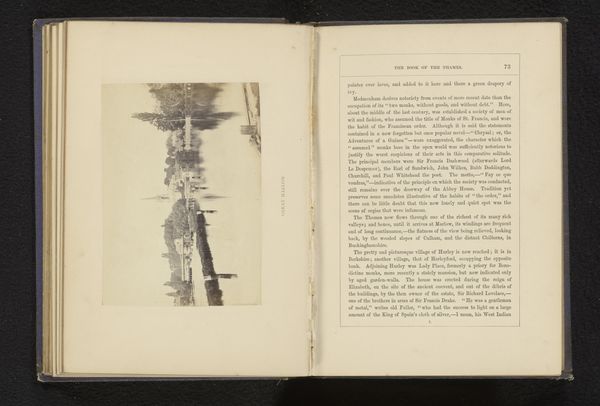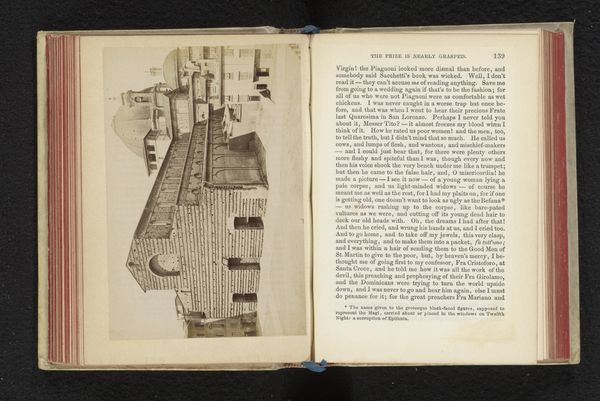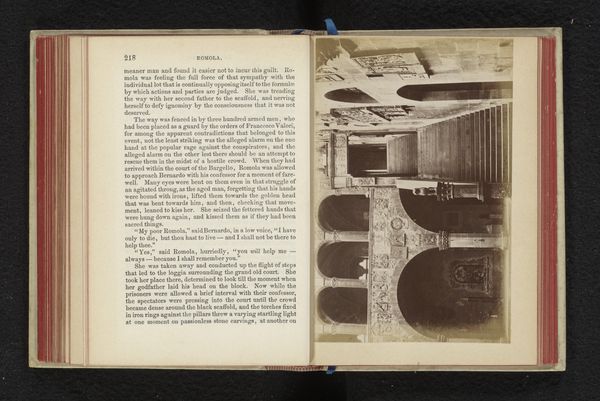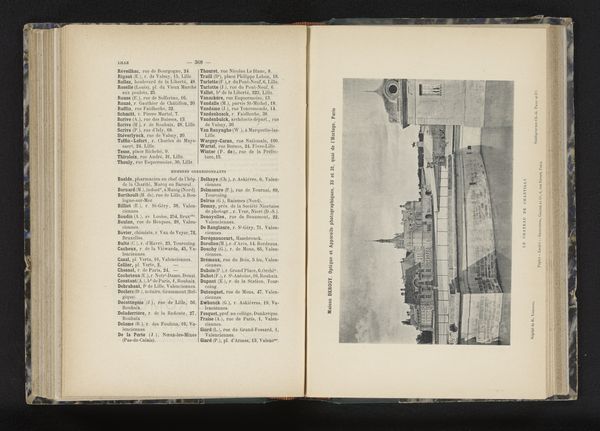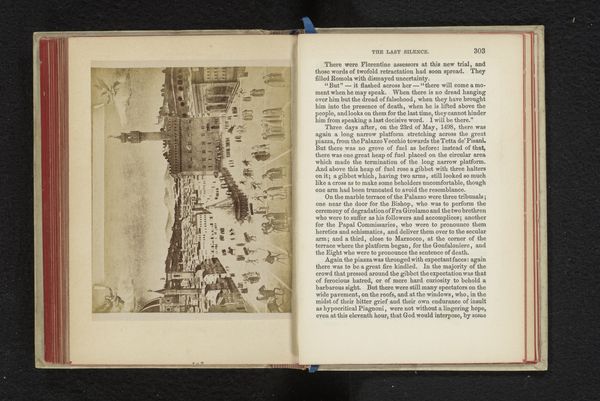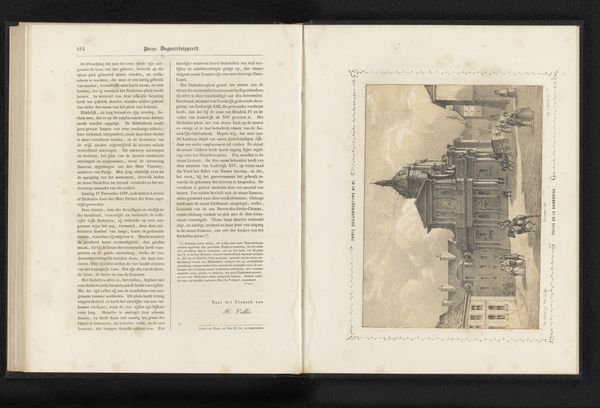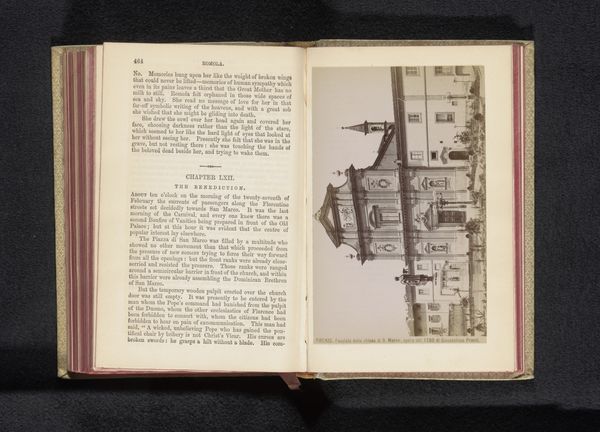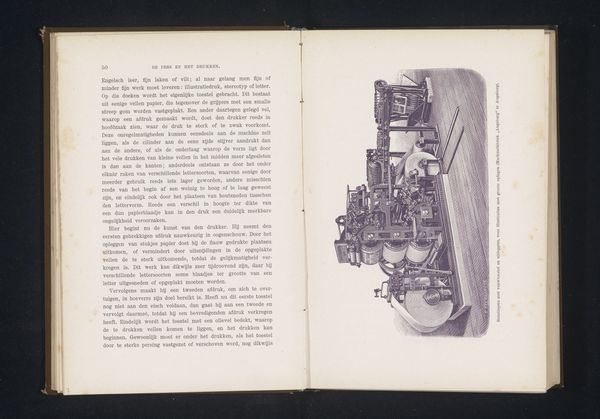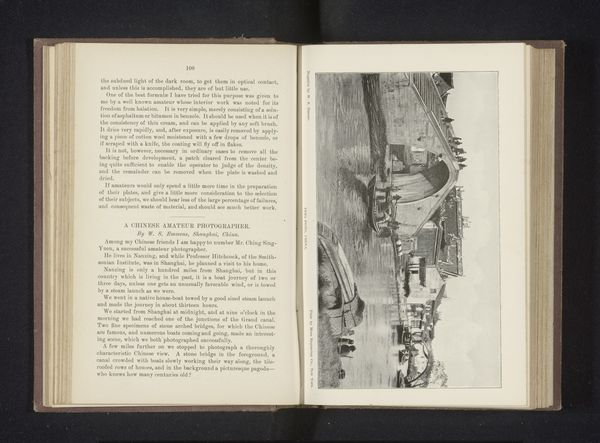
print, etching, photography, albumen-print
#
byzantine-art
#
aged paper
#
homemade paper
#
paper non-digital material
#
paperlike
# print
#
etching
#
sketch book
#
landscape
#
paper texture
#
photography
#
personal sketchbook
#
journal
#
cityscape
#
letter paper
#
albumen-print
#
historical font
Dimensions: height 93 mm, width 138 mm
Copyright: Rijks Museum: Open Domain
Curator: So, let’s dive into Giacomo Brogi's "Gezicht op de Dom van Florence," dating back to before 1863. It appears to be an albumen print, showcasing the Florence Cathedral. What strikes you first about this work? Editor: Well, I’m drawn to how the image is presented within the open book. It’s not just a photograph, but a photograph within a context. There's a strong textural contrast between the sharp detail of the Duomo and the faded text on the adjacent page, almost like flipping through someone's travel journal. What's your take? Curator: Absolutely. It's essential to consider the materiality of this piece. It's not simply an image of the Duomo, but an albumen print – a specific photographic process that involves coating paper with egg white to create a light-sensitive surface. How does this production method inform our understanding? Editor: It highlights the labour involved in creating and consuming images at that time, versus our instantaneous digital methods now. I mean, preparing albumen prints sounds pretty involved. Does the material inform the cultural or artistic value? Curator: Precisely! Consider how the albumen print elevates photography from a mere reproductive technology to a form of artisanal production. It intertwines science, craft, and art, influencing the reception and economic value of such images. Brogi’s choice speaks to an intent beyond simple documentation. Editor: It's interesting how focusing on the materiality reframes our perception of the artwork. We’re not just looking at a scene of Florence; we are considering the hands-on process and labour through material, as a crafted object consumed by a specific audience. I guess it's less about what is depicted, but HOW it is created and who consumed it that matters most. Curator: Exactly. The "how" becomes as significant as the "what," directing us toward social and economic conditions of its time. Brogi wasn't just capturing Florence; he was participating in a market of consumable images, where the value was as much in the object as the subject. Editor: This makes me see the image in a whole new light! Thanks for pointing out this material aspect; it enriches our understanding. Curator: Indeed! Reflecting on art this way unveils stories embedded within production itself, prompting further inquiries.
Comments
No comments
Be the first to comment and join the conversation on the ultimate creative platform.
